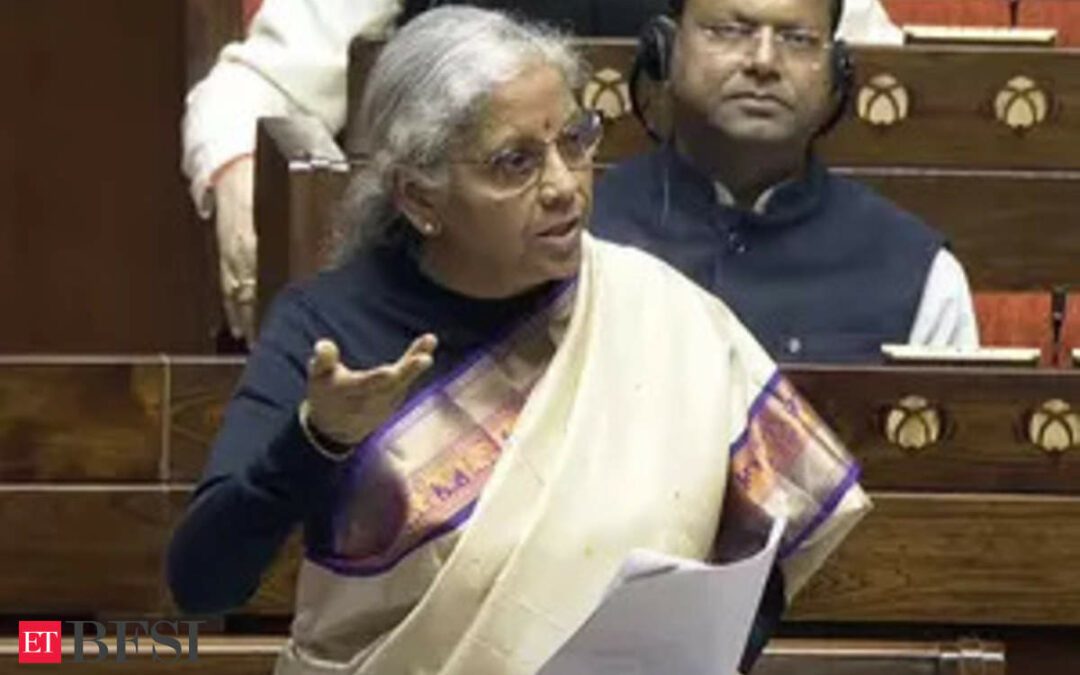The Narendra Modi government on Thursday tabled the much-talked about white paper in the Lok Sabha on Thursday, detailing the “policy misadventures and scams” under the Congress-led UPA government’s 10-year tenure and how the NDA set about turning it around.
During her Interim Budget speech, Sitharaman stated that the government would release a white paper on the economy detailing the economic mismanagement during the ten years of UPA rule until 2014.The NDA government has overcome the crisis of those years, and the economy has been put firmly on a high sustainable growth path with all-round development, Sitharaman said.
“The UPA government’s decade of governance (or its absence) was marked by policy misadventures and scams such as non-transparent auction of public resources (coal and telecom spectrum), the spectre of retrospective taxation, unsustainable demand stimulus and ill-targeted subsidies and reckless lending by the banking sector with undertones of favouritism, etc,” the report claimed.
In a detailed report, the Finance Ministry claimed that Prime Minister Narendra Modi inherited a fragile economy laced with economic mismanagement and financial indiscipline amid widespread corruption.
“Our government refrained from bringing out a white paper on the poor state of affairs then. That would have given a negative narrative and shaken the confidence of all, including investors,” the report says.
Top highlights from the white paper:
- The UPA Government inherited a healthy economy ready for more reforms, but made it non-performing in its ten years.
- Ironically, the UPA leadership, which seldom fails to take credit for the 1991 reforms, abandoned them after coming to power in 2004.
- Even as the country was standing at the cusp of emerging as a powerful economy, little was done by the UPA government to build upon the strong foundation laid by the previous NDA government.
- Economy grew fast between 2004 and 2008 due to the lagged effects of the reforms of the NDA government and favourable global conditions. However, the UPA government took credit for the high growth but did little to consolidate it.
- UPA government, in its quest to maintain high economic growth by any means after the global financial crisis of 2008, severely undermined the macroeconomic foundations
- High fiscal deficits for six years between FY09 and FY14 heaped misery on ordinary and poorer households. Inflation raged between 2009 and 2014 and the common man bore the brunt
- Banking crisis was one of the most important and infamous legacies of the UPA government.
- Under the UPA government, foreign exchange reserves had declined from around USD 294 billion in July 2011 to around USD 256 billion in August 2013
- Under the UPA government, public finances were brought to a perilous state
- Poor policy planning and execution also resulted in large unspent funds for many social sector schemes during the UPA years, which in turn crippled the effectiveness of the government’s schemes
- The government’s prioritisation of unproductive spending meant that significant funds were allocated towards consumption rather than productive investment
- The coal scam shook the conscience of the nation in 2014
- India’s telecom sector lost a precious decade due to the 2G scam and policy paralysis.
- While investors across the world sought ease of doing business, the UPA government provided policy uncertainty and hostility.
- The demotivating investment climate under the UPA government led to domestic investors moving abroad.
- Time and again, there was a crisis of leadership in the UPA government. It came out in full public glare in the shameful public tearing up of an ordinance issued by the government.
- The economic mismanagement choked the growth potential and India became a “fragile” economy.
- We continue to undertake measures to unearth black money and to discourage recourse.
- Since the time our government assumed power in 2014, the Indian economy has undergone many structural reforms that have strengthened the macroeconomic fundamentals of the economy.
- The government has undertaken diverse reforms to restore and enhance the potential of the economy by creating a business-friendly environment, improving ease of living, and strengthening the governance systems and processes. This led to a substantial decline in policy uncertainty in India, which had peaked under the UPA Government.











